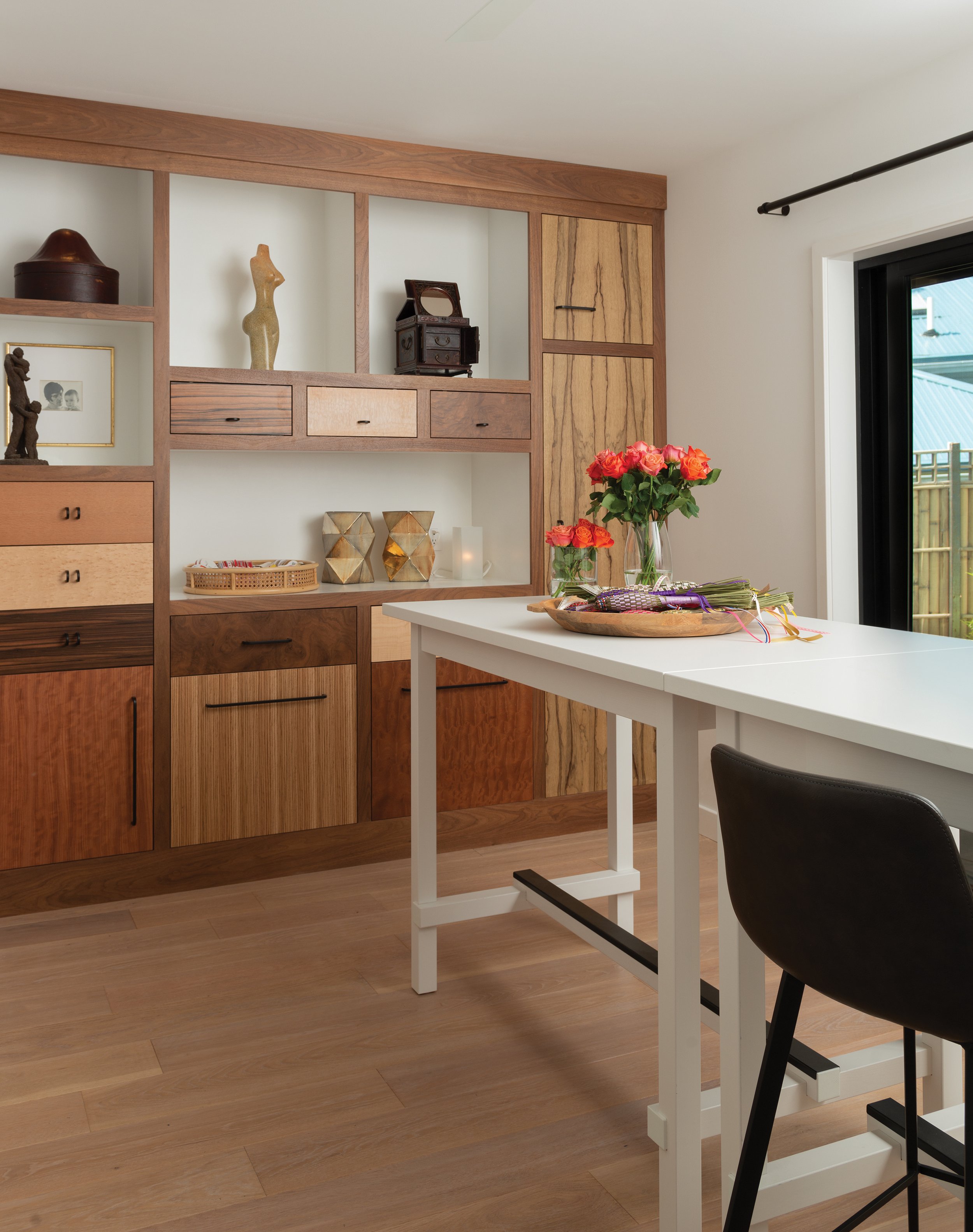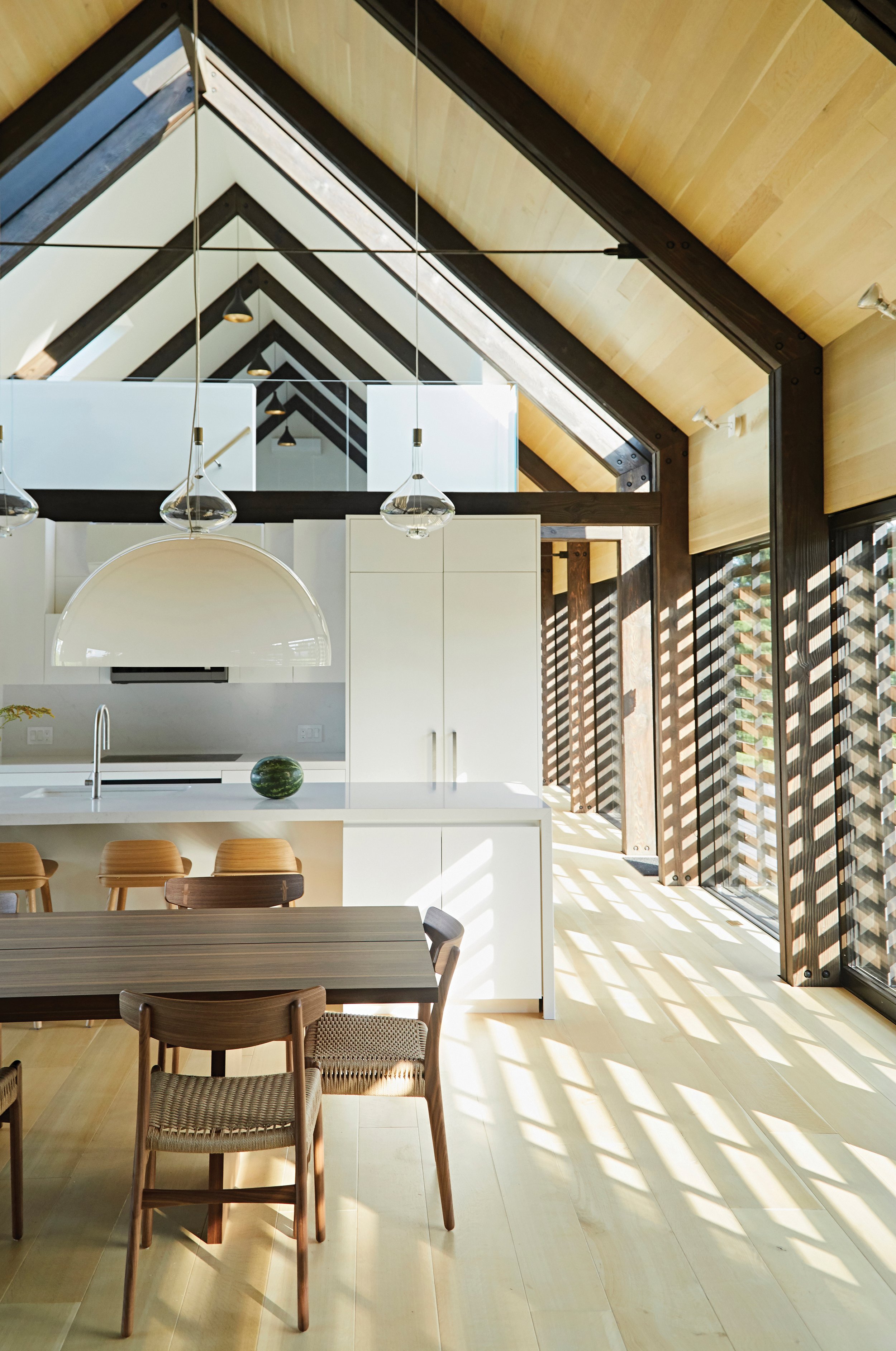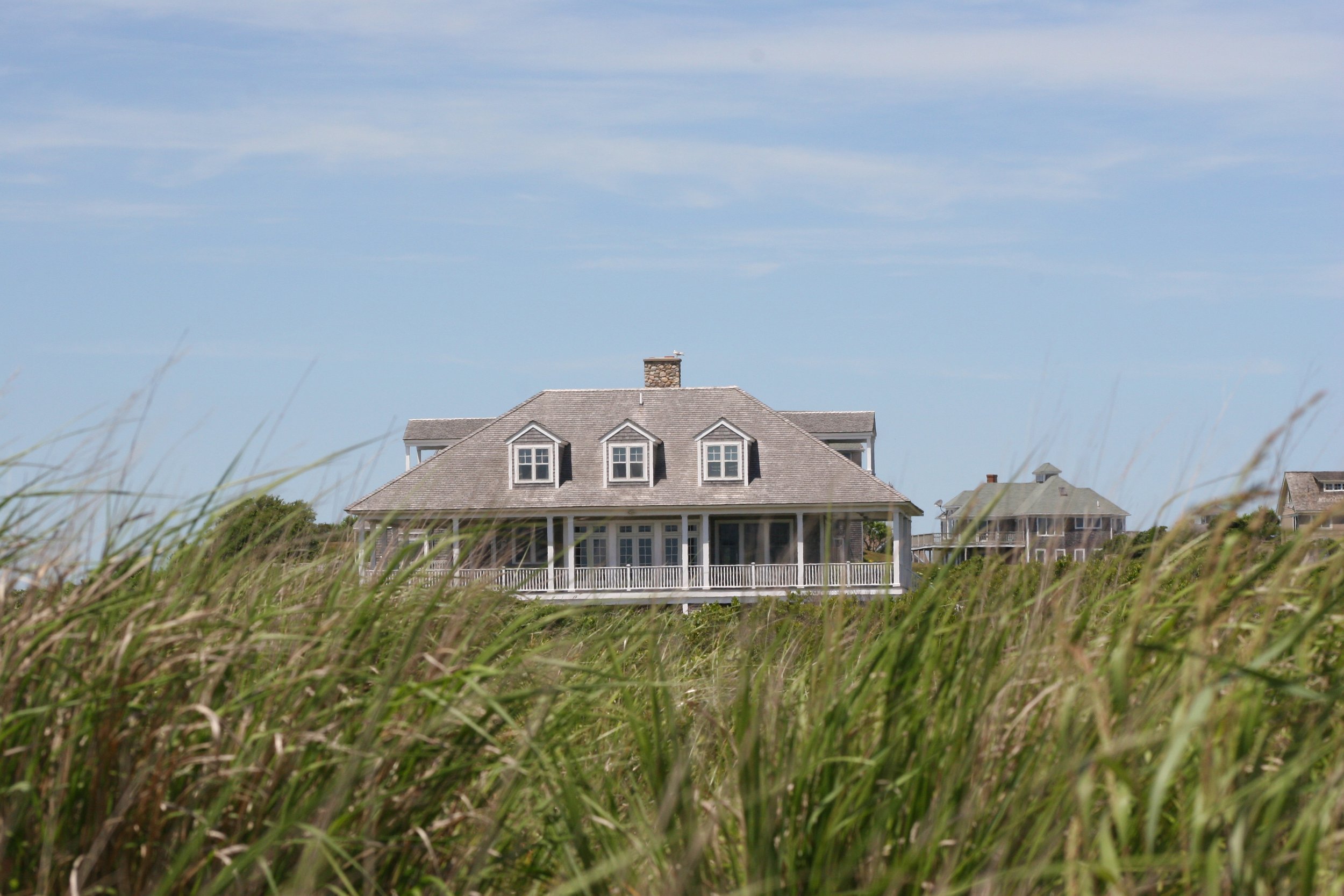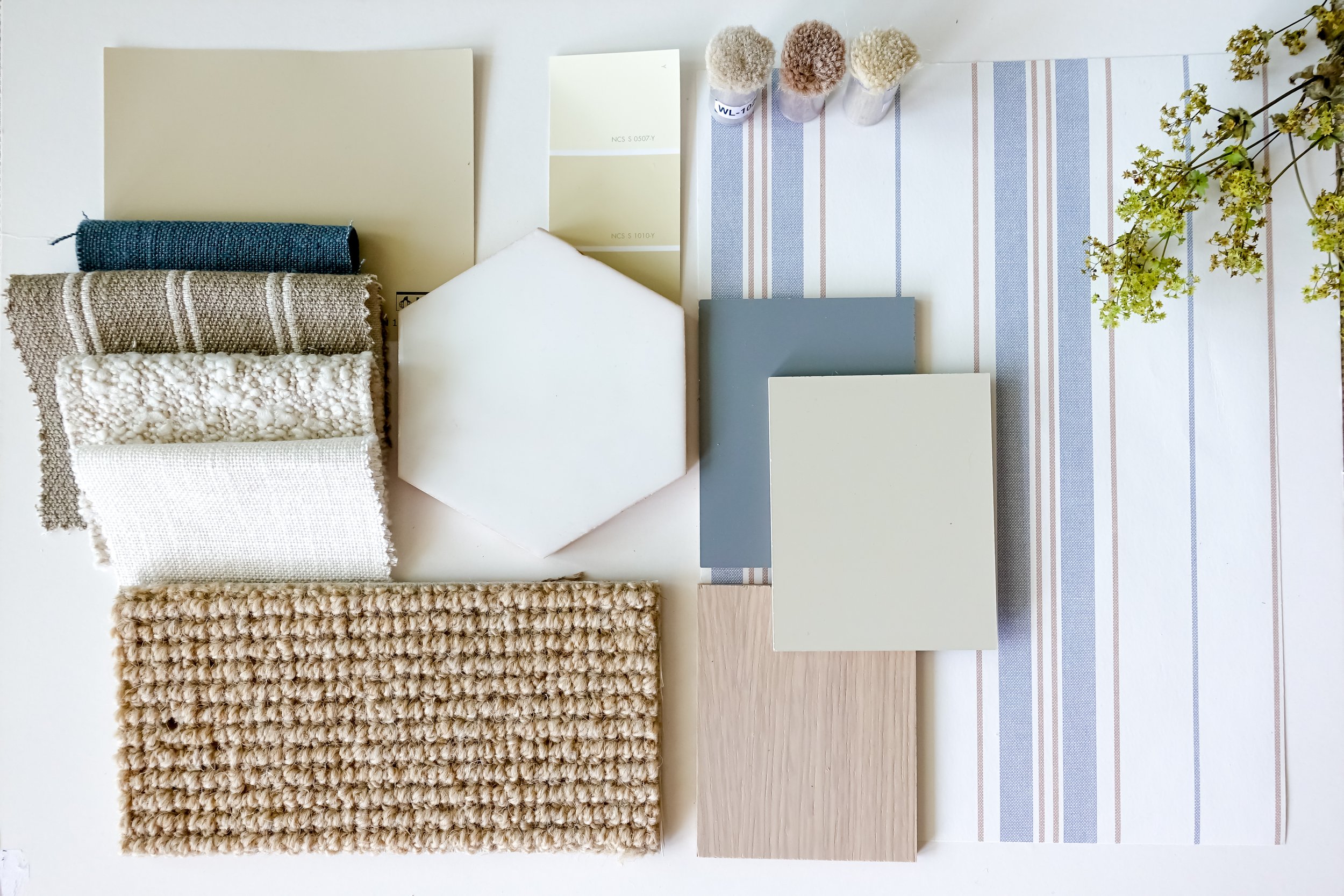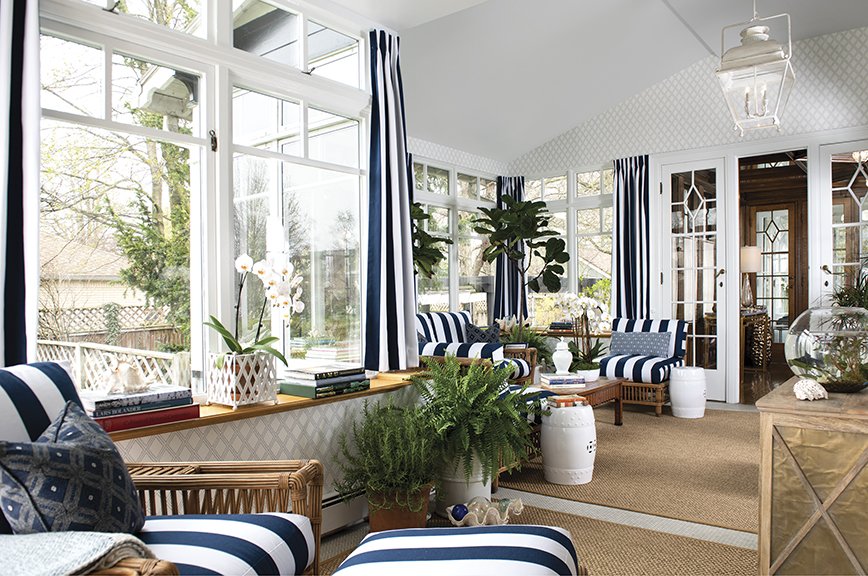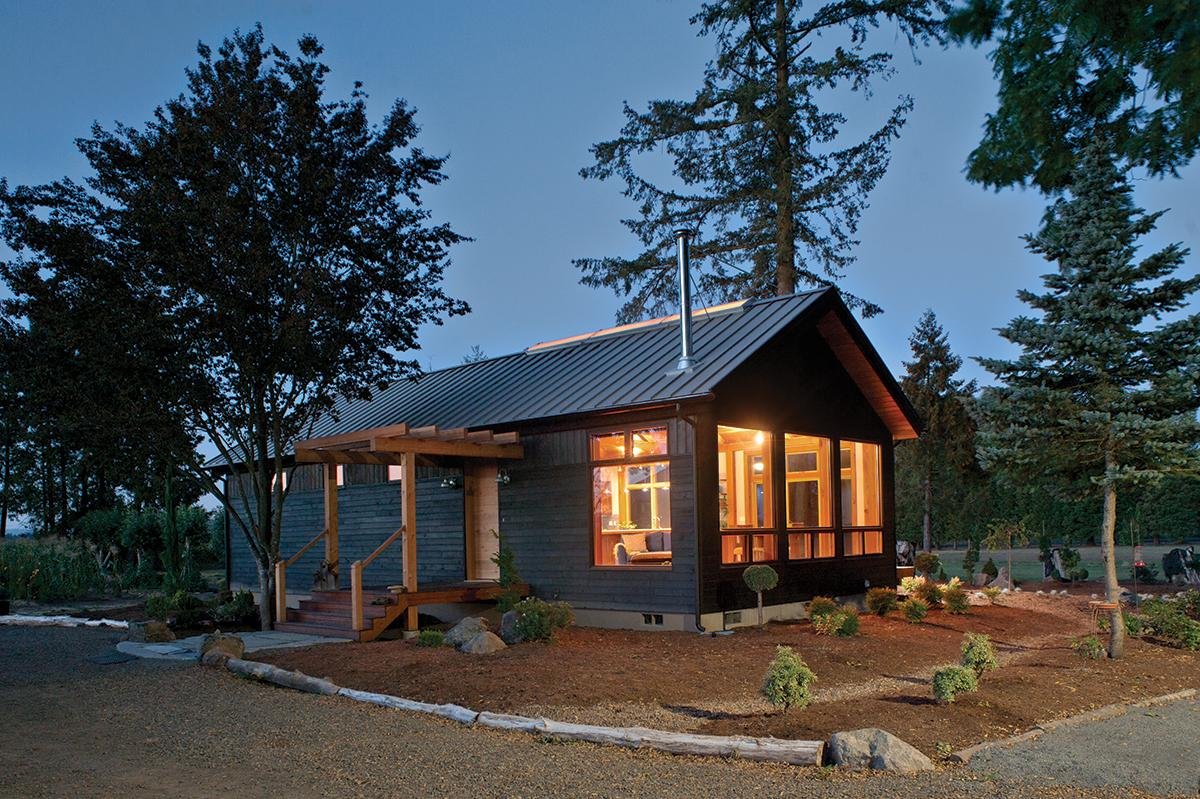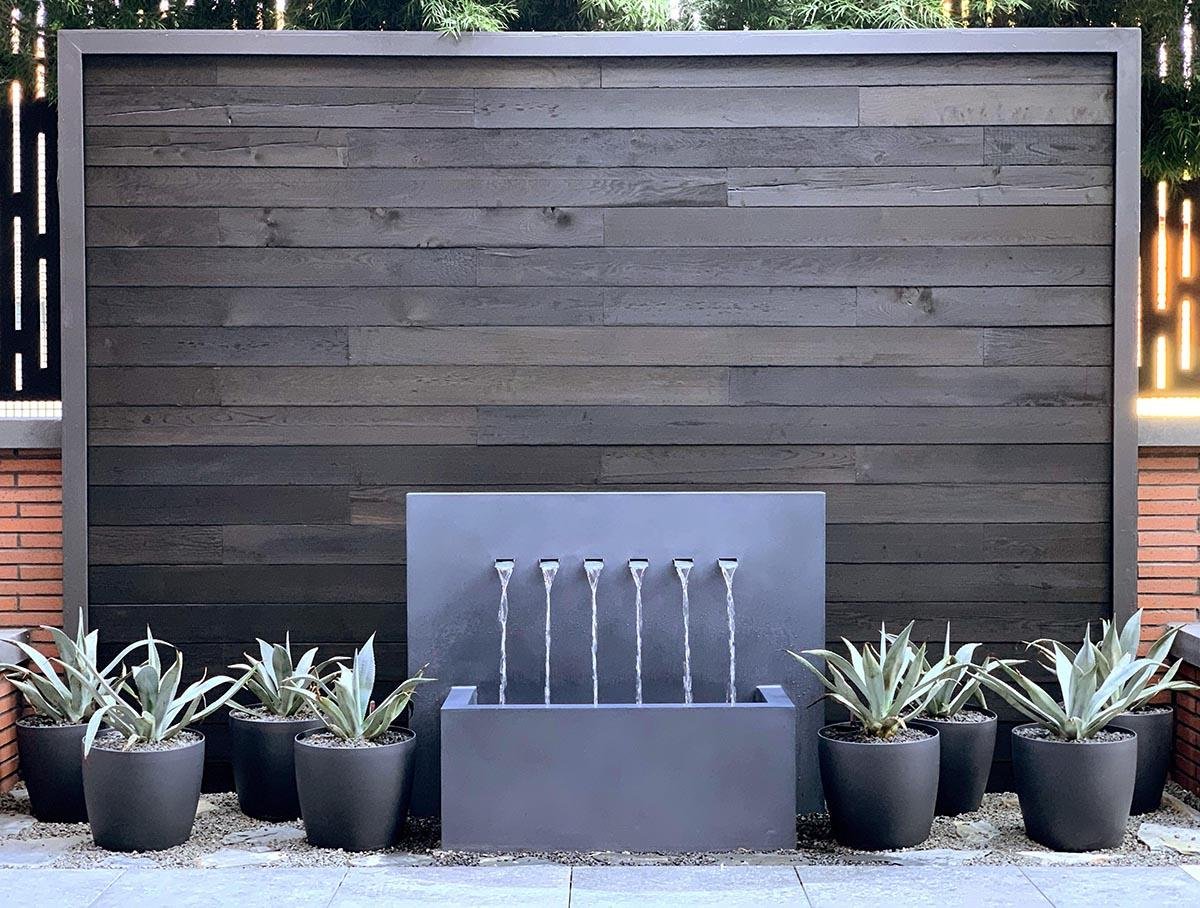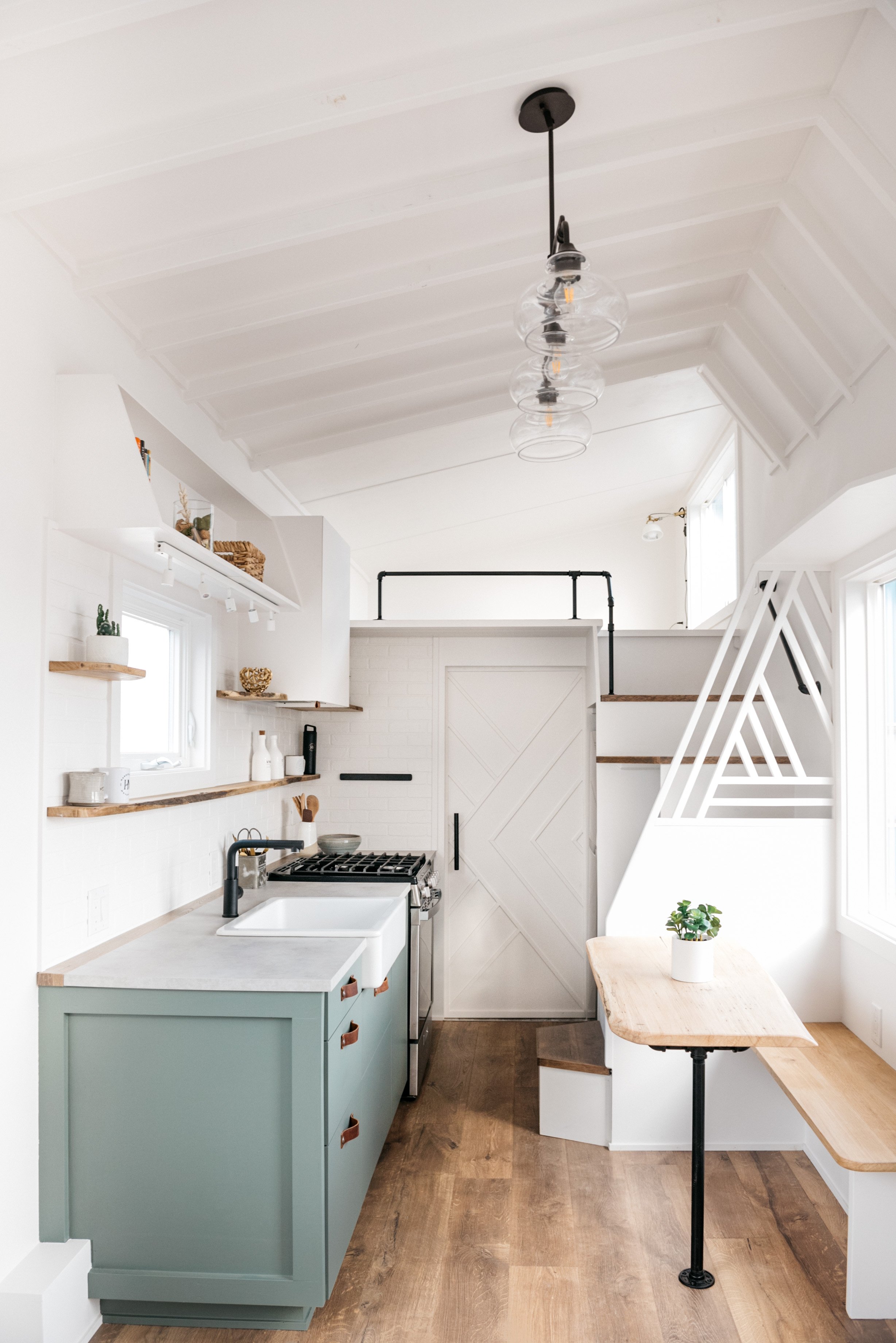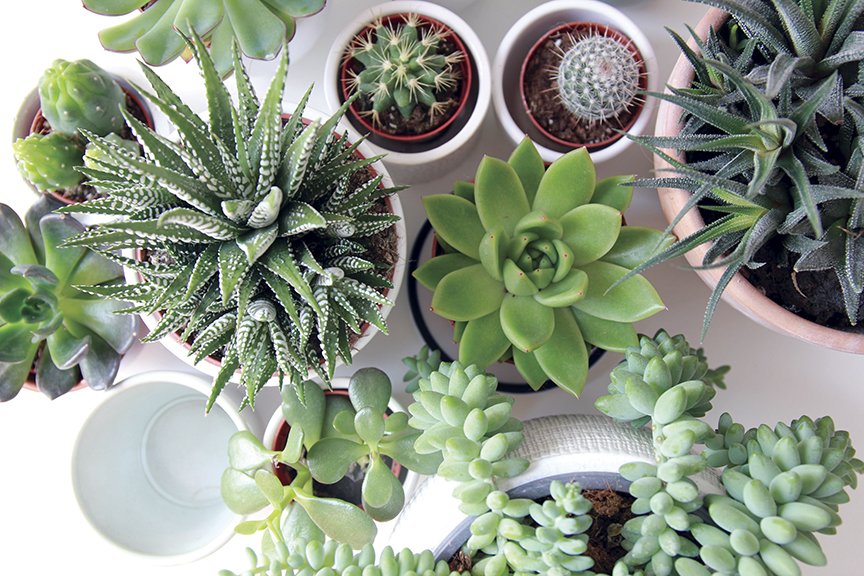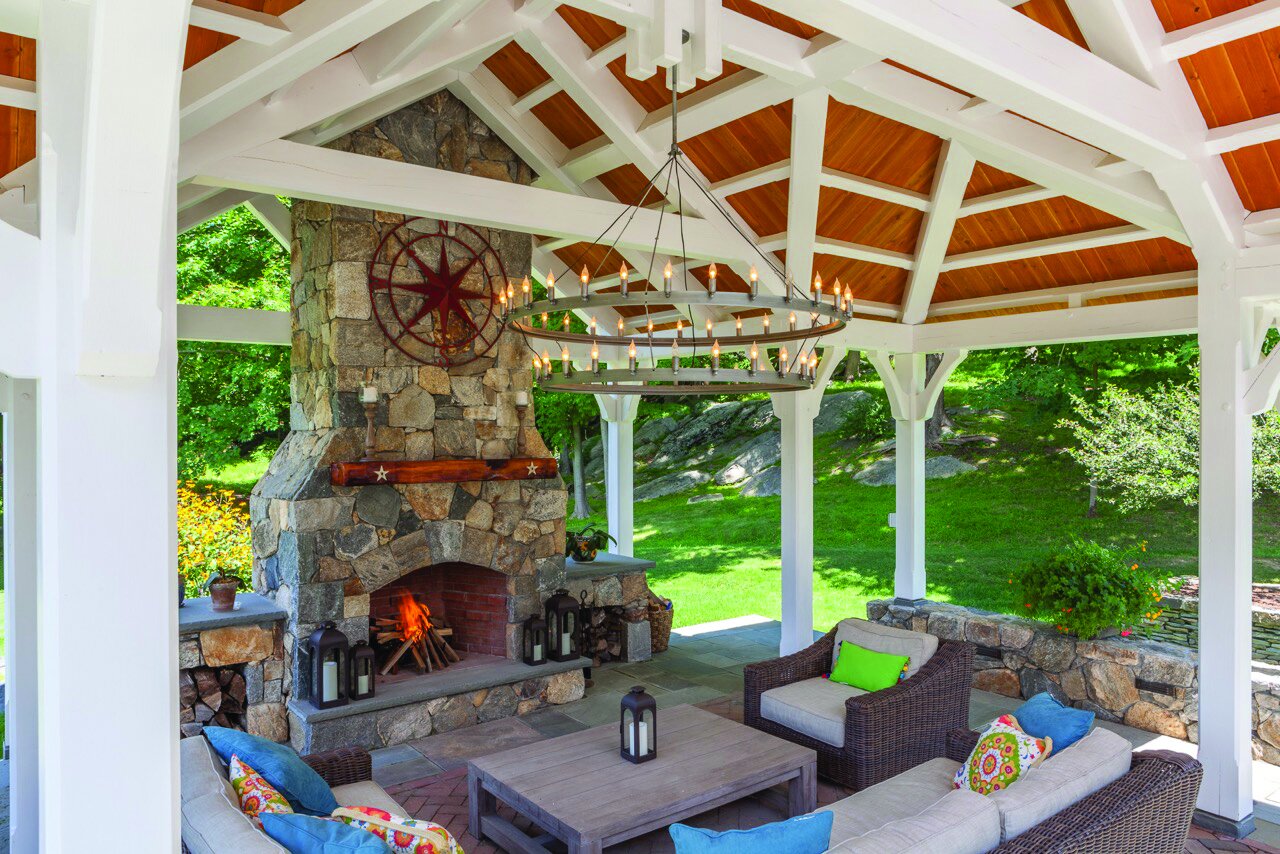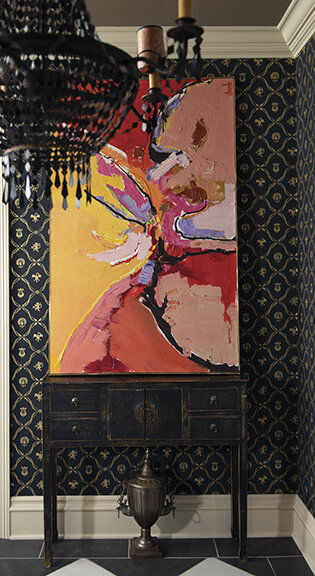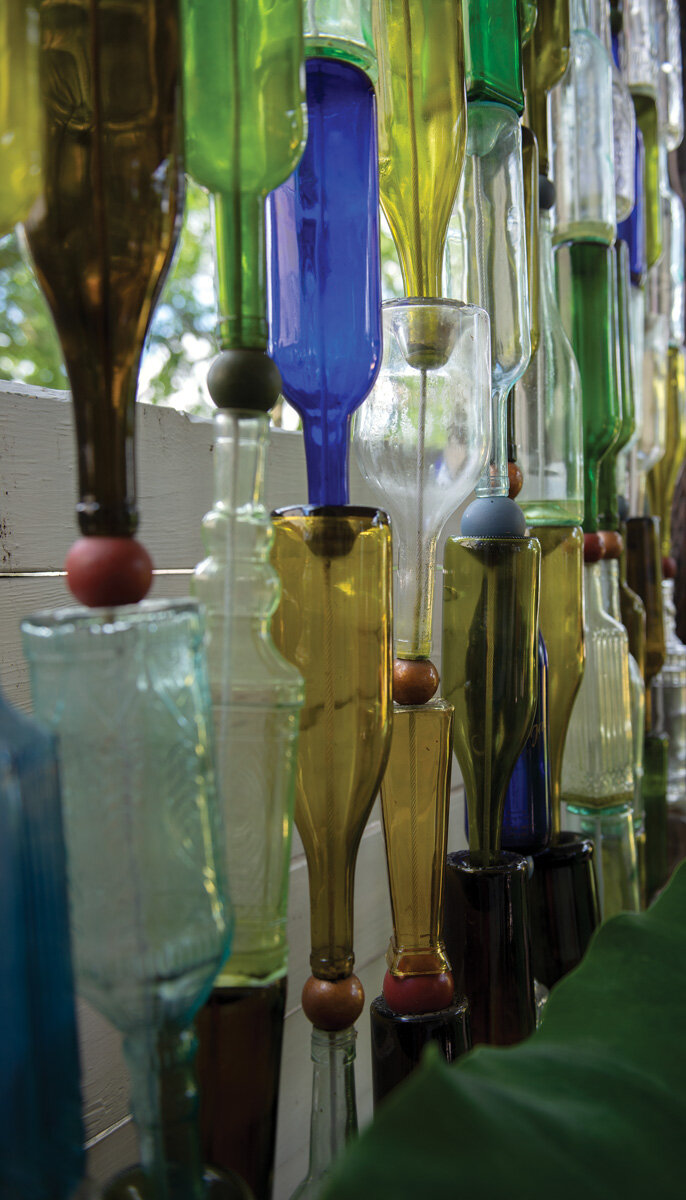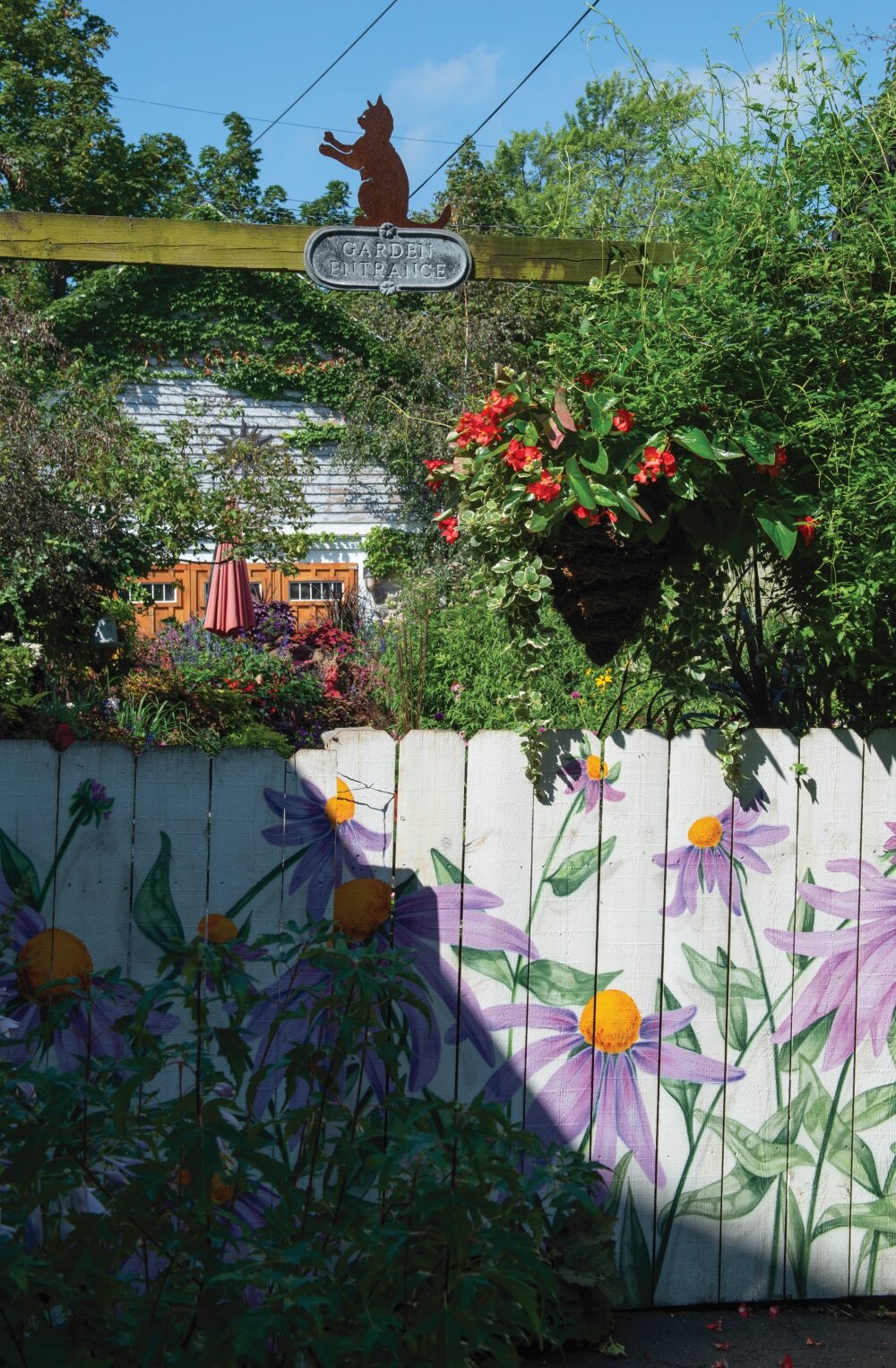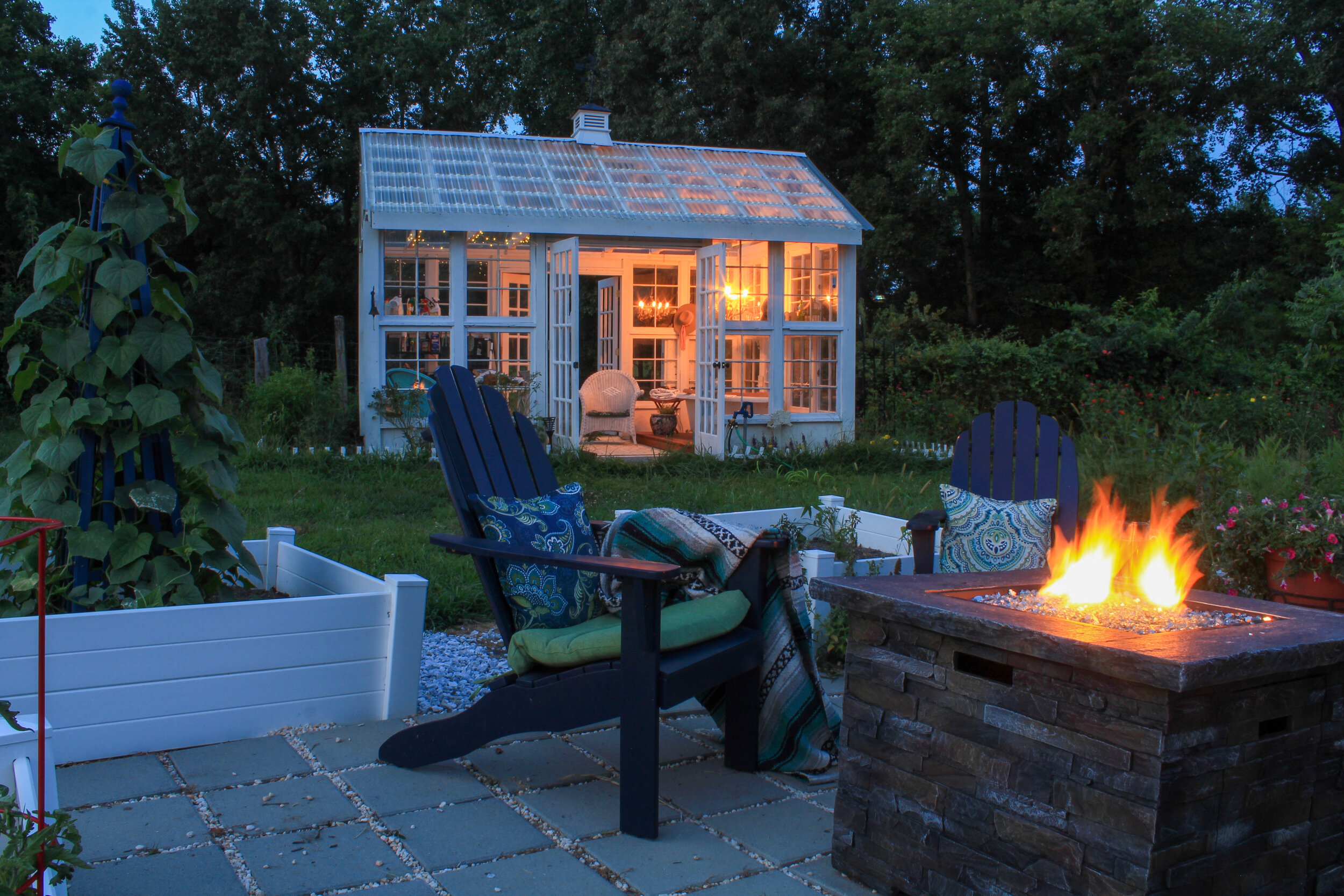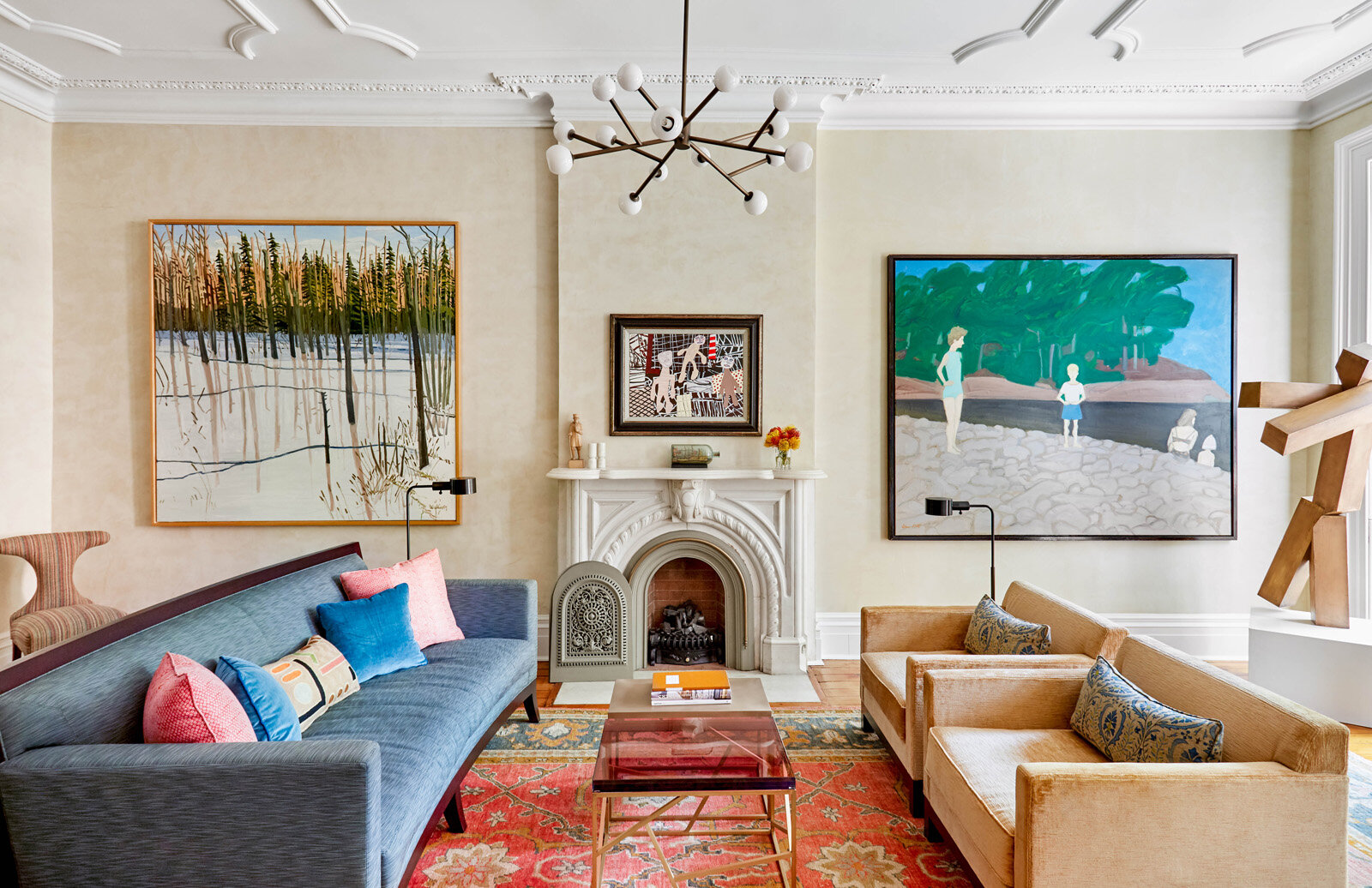Design Trends 2023
Here’s what we see shaping up for 2023.
Between January and February, we’re in the throes of finishing up our print publication: the annual, DesignNY Home & Resource Guide. Doing so gives us a chance to reflect on where design has trended over the past 12 months while considering what exciting new developments are in store for the upcoming year.
Here’s what we see shaping up for 2023:
Japandi
Take Japan’s simple, elegant aesthetic and combine it with Scandinavia’s clean lines and hygge comforts. Japandi delights in natural imperfections in soul-cleansing spaces that feel slow and peaceful.
Brutalism
Concrete has emerged as a gorgeous and practical design element. Couple it with industrial materials and the warmth from biophilic elements such as plants, curved lines, wood and other sustainable materials for a new interpretation of this raw, unadorned style.
Surrealism
It’s a voyage into the unexpected and flirtations with the irrational. Think of surprise, out-of-scale pairings, quirky fabrics, and bold details that turn spaces into portals to new dimensions.
Artisan Pieces
From glass to iron, supporting local artists and bringing authenticity to a space that reflects your unique style is key. One expression is the resurgence of folk art (check out “tramp art”) that celebrates the stories and craftsmanship in pieces hidden in vintage and antique shops. It’s the antithesis of fast furniture and ubiquitous social media design trends.
1970s Glam
Bold colors, chunky sofas, rattan furniture and velvet fabrics — after years of graywashing our interiors the cheerful colors and unapologetic prints of the 70s offer a reprieve. Not ready to go all in a trend that borders on maximalism? Take a statement element and blend it with your minimalism-leaning décor.
Conscious Consumerism
There’s a reason this has become an annual entry. Our awareness of the environmental impacts of our purchases grows every year. Bringing beauty and creativity to design for energy efficiency, smaller footprints, reduced consumerism, and local, sustainably sourced materials continue to be celebrated as the correct way to implement design across all styles.
Just Released: The 2023 DesignNY Resource Guide!
We could not be more excited for this year’s issue, which represents our 22nd year of publication!
In between the home shows, design shows, interviews, blog posts, and support for the local design community, we work hard to produce our flagship product: the annual DesignNY Resource Guide. This full color, glossy publication becomes a coffee table fixture across the region for the entire year.
The DesignNY Resource Guide is the go-to source of information connecting homeowners to service providers and professionals to other professionals. Are you a home builder looking for stoneworker? A homeowner searching for a glass artisan? An interior designer in need of an architect? A home design hobbyist who enjoys looking for trends, insights, and ideas? DesignNY is the answer to all of this and more.
What’s New?
We could not be more excited for this year’s issue, which represents our 22nd year of publication! As we interviewed for home features and professionals on design trends, we saw a continuation and strengthening of a familiar theme – connecting design to nature for improved health and wellness for homeowners and the environment.
Builders and landscape designers weighed in on what is responsible design. A landscape specialist introduces the important concept of foodscaping for a glorious garden. Discover how to create an auditory oasis, utilize soothing water elements, and incorporate smaller amenities for your perfect outdoor space.
Designers wowed us with their imagination and ingenious solutions. We showcase the creativity in connecting your home to your exterior environment and stunning remodels of interior spaces. And this year, we devoted more space for longer articles for more in-depth coverage and stunning imagery.
How to get your 2023 issue:
Pick one up at all Barnes & Nobles®, Wegmans® and Tops® in the Buffalo, Rochester, Syracuse, and Finger Lakes regions.
Stop by our booth at the Buffalo Home Show or Rochester Home & Garden Show.
Order it from our website.
Contact us and subscribe (scroll to the bottom of the home page).
Ask for a copy from your design professional (architect, builder, landscaper, artisan, interior decorator, retailer, etc.).
Be an advertiser. We will personally deliver complimentary boxes of the recent issue to the destinations of your choice to connect your outstanding work to current and potential customers (and help remind them to recommend you to their friends).
If you’re a design professional interested in being part of the DesignNY Resource Guide or would like an advertorial on our website, call us at 716.667.1659.
We can’t wait to see and hear from you!
What is Layered Lighting?
Here are the players behind the layers.
An expert reveals how to achieve the perfect layers of light for your interior spaces.
Lighting sets a mood for a room, allows us to extend our days, and even plays an important role in our circadian system health. In trying to determine the right kind of light for your space, you may hear references to using “layers of light.” What does layered lighting mean and how do you do it?
Robin Muto, lead designer and owner of Robin Muto Interiors, is an interior and lighting designer. She says that layered lighting is having different light sources that create different qualities of light.
Here are the players behind the layers:
Track lighting are little spotlights with different beam spreads. They range from creating an intense, bright narrow spot to a white flood that will appear as a large, illuminated area.
Table lamps provide direct, indirect, and ambient light whose qualities vary with the type of shade.
Cone-shaped lamps are little powerhouses whose only emanating light is that which comes out from below. Muto describes it as an intimate layer of light.
Wall sconces send light upward and outward or downward. These help a room avoid what Muto calls, “the museum effect,” when a room is filled with all recessed and downward lights.
Floor or wall lamps, like table lamps, help hit the ceiling with light.
When it comes to planning the lighting in your own space, Muto shares her advice.
You cannot have too much light.
Aim for variety. With a standard 9-foot ceiling you’re better off having eight various sources with each at 100 watts instead of four giant recessed lights of 250 watts. With no light bouncing off the ceiling a room can feel oppressive, even in a large, bright space.
Invest in table and floor lamps. Muto says that you don’t need to have a bunch of light fixtures. Instead, get table and floor lamps and move them around.
Get dimmers for your cords. These are an affordable and easy way to add diversity to a room’s light.
For more information, Muto recommends the American Lighting Association.
Timeless and Trendy: Why Coastal Grandmother is the Toast of the Town
How do you capture a coastal grandmother décor?
Plus, several ideas for bringing the coastal grandmother décor into your home.
It’s a vibe awash in soothing moods and a fresh, laissez-faire attitude. It’s what you feel when you’re surrounded by creamy sand, anchored with elegant strands of sea grass and holding treasures of silky-smooth sea glass.
Feeling it? If yes, you’ve just leveled up to the summer’s hottest trend, the coastal grandma (or coastal grandmother, if you prefer). The word trend here is used loosely. Coastal grandma is how classic elegance and timeless sophistication expresses itself while on vacation at the shore. It’s a stylistic staple driven by the Atlantic seaboard’s clapboard, coastal homes, driftwood, sand-scrubbed boardwalks, and salty air.
Matriarch Mode
In clothing, coastal grandmother style is laid back luxury recognized by loose silhouettes, linens, slouchy, cashmere cardigans and chunky nautical striped sweaters. A wide-brimmed straw or bucket hat, leather slides or espadrilles (remember those?), and handbag in a natural, neutral material polishes the ensemble. The look is relaxed and refined.
Interior Panache
See a house near the water? Odds are high the interior is a thematic nautical ensemble. Coastal grandmother offers a refreshing update. Coastal grandmother interior design jettisons the predictable beachy themes and replaces it with comfortable ease and sophistication.
How do you capture a coastal grandmother décor? Apply the clothing aesthetic to your home. You may even find some ideas from maximalism, hygge, or biophilic design. Here are some guidelines:
Colors: Think of a seascape’s neutral colors. Creams, whites, beiges, soft browns, and earthy blues.
Fabrics and textures: The space should feel soft yet tailored. Tasteful use of wicker, straw, wood, and other natural materials, especially linen.
The extras: Choose items that exude seaside relaxation. Stacks of books, fresh flowers, herbs growing on a windowsill, a single beautiful shell or piece of driftwood, throw pillows, a bowl of fruit from the local farmer’s market — keep it fresh and full, not cluttered.
With coastal grandma, it’s a breezy summer day, regardless the time of year. How nice is that?
Take It To The Max: What is Maximalism?
More is more.
If minimalism is the design equivalent of “clearing your mind,” maximalism is where you go to curl up, feel comforted in the familiar, and absorb the unique, chaotic nature that defines you. With maximalism, less is not more. More is more.
How do you pull off maximalism design? You do you. Unlike genres that adhere to unspoken guidelines to achieve a definitive look, maximalism grows organically from your tastes, life experiences, and collections.
Colors & Patterns
Does a perky splash of poppy against a dark mossy green make you happy? Have a thing for herringbone patterns? Need a place to hang your cool grandma’s retro textile that you love because it reminds you of her? Yes. Yes. And yes. All of the above. Filling your space with saturated colors and contrasting patterns is what it’s about.
Personal Collections
You traveled solo around the world and want to show off the unique pieces you picked up along the way. Maybe you’re a rock hound with some rare finds. Perhaps baskets are your thing. Or feathers. Maybe you’re a bibliophile. Whatever it is, these items are an expression of who you are and deserve to be placed where you can see them, be inspired by them, and talk about them.
Comfort Items
Candles, pillow piles, blankets, photographs — these are the things that can help you feel swaddled in visual love. They add to the layers of interest inherent to a maximalism room.
Plants
With their ability to improve indoor air quality, make you feel happier and keep you connected to the natural world, plants are a welcome addition to any maximalism design.
Biophilic Design: It’s Only Natural
You can take a person out of nature, but you cannot take nature out of a person.
You can take a person out of nature, but you cannot take nature out of a person.
Countless studies across numerous disciplines have linked the quality of our physical and mental health to our exposure to nature. Benefits include better sleep, reduction in inflammation, reduced stress, and strengthened immunity, among others. We are wired to be outside. And yet, we spend very little time there. Enter biophilic design.
Given our lifestyles have evolved in a way that requires us to be inside for most of our time, the emergence of biophilic design is only natural.
What is Biophilic Design?
Biophilic design uses the human need to interact with the natural environment by using design elements to create spaces that evoke an organic connection. Think in terms of using objects and textures inspired by nature or incorporating natural elements into a décor.
Biophilic Design Examples
Interior biophilic design does not mean you are recreating an outdoor environment, unless of course that is your intent. Rather, you’re borrowing certain elements and customizing them to fit your favorite style genre.
Think in terms of water features, green walls (a wall that is intentionally covered with living plants), or even felted wool throw pillows and cushions shaped like pebbles or succulents. The hot trend of shou sugi ban is another way to incorporate biophilic design into your home’s interior or exterior.
Biophilic Meaning
Understanding what is biophilic design also requires knowing what it is not. Choosing plastics that cannot decompose or poor-quality furniture that will have to be thrown out in a couple years places unnecessary stress on landfills and the environment. In essence, the opposite of what biophilia represents.
Bottom line: be a conscious consumer and make choices that fill your home and office with elements that nurture the nature of your wellbeing.
Shou Sugi Ban: Japanese Burnt Wood Siding is a Hot Trend
What’s old is new again.
What’s old is new again. In the case of shou sugi ban, there are good reasons for it. Japanese for “charred cedar board,” shou sugi ban is an ancient charring process that darkens the wood. This Japanese burnt wood comes in an array of textures and tones, establishes a distinct, sophisticated style, and checks all the boxes of what people want most – biophilic design, high performance, environmentally smart, and authentic presentation.
Biophilic Design
Our overall health and wellness crave connections to the natural environment. The shou sugi ban process results in wood that transforms the grain into a hypnotic seduction reminiscent of water. The grain’s waves and swirls flow across the wood. It’s elegant and elemental.
High Performance
Fire destroys wood. Paradoxically, just the right amount of char protects and preserves it. The thin layer of carbon produced in the charring process protects the interior wood making it naturally resistant to insects and moisture damage.
Environmentally Smart
Instead of using aggressive stains and paints to achieve a dark, bold look, this Japanese burnt wood process delivers it naturally. Because the process preserves the wood, it reduces maintenance including the applications of insecticides. It’s also available in the United States eliminating the need for importing exotic materials and the associated the carbon-intensive footprint that goes with transportation.
Authentic Presentation.
In a rebuke of style that is overworked, the nature of shou sugi ban is one of mesmerizing raw beauty. It offers its sleek and gorgeous patina as an inherent quality. It’s honest and we love it for that.
Check Out this Japanese Burnt Wood in Action: Pioneer Millworks provides shou sugi ban wood for interior and exteriors. See how it’s used as a two-story fireplace backdrop in a creative, herringbone pattern in a home featured in DesignNY Magazine’s 2022 issue.
2022 Design Trends
Homeowners want interiors with an aesthetic and design that brings health, wellness, and comfort to daily life.
As 2022 gains momentum, we still find ourselves anticipating what the year will bring. Pandemic repercussions continue to influence how we live, work, play and socialize. We are adapting to our changed reality and asking our homes to keep pace with our human needs. Homeowners want interiors with an aesthetic and design that brings health, wellness, and comfort to daily life.
With that in mind, here’s the current snapshot of design trends for 2022.
1. Return of the Curves
Multiple studies, including a 2013 Proceedings of the National Academy of Sciences (PNAS) revealed that men and women found curved spaces more welcoming and pleasant than rectilinear ones. In times of persistent uncertainty, sculptural and flowing forms are appealing once again.
2. Biophilic Design
Overwhelming numbers of studies confirm that humans need nature for their health and wellbeing. Given that Americans spend roughly 90% of their time indoors, the growing trend of biophilic design — the practice of connecting humans with nature within our built environment — makes sense. Look for objects and textures inspired by nature and incorporating natural elements like water and plants into your décor.
3. Conscious Consumerism
The steady march of acute and chronic environmental disasters coupled with a thriftier mindset sparked by the pandemic has made us more conscious about what we do and don’t consume. Sustainable materials and furniture built for longevity are the ideal as well as selections made from eco-friendly, locally-sourced materials. Vintage and consignment furniture is another go-to resource for fabulous, one-of-a-kind design.
4. color.
In keeping with the biophilic theme, colors this year carry organic hues. Leafy gray-greens along with shades of brown as neutral colors stretching as far as terracotta and wheat. And let’s not forget Pantone’s 2022 Color of the Year: Very Peri.
5. Maximalism.
Newton’s Third Law of physics state that for every action there is an equal and opposite reaction. Enter maximalism. After years of being seduced by minimalism’s austerity, maximalism is an aesthetic of excess. Go ahead and display your prints, art objects, patterned rugs, colors, textured furniture, photograph collections, piles of books, candles, pillow piles, and whatever else makes you feel good all in one room. The final word? You do you.
The Design Idea Generator
Here are 3 sources of inspiration that will help you escape the trap of standard designs.
Here are 3 sources of inspiration that will help you escape the trap of standard designs.
Remember being a kid with a new box of crayons? Ideas. Possibilities. Creativity. Imagination. The freshness of it all!
As adults, we have trouble finding creative outlets. What most people don’t realize is there is a canvas that surrounds them every day. Let your creativity flow and reimagine the spaces in your home! The journey to a beautifully decorated, remodeled, or newly built space is often just as exciting (if not more), than living in the completed project. It’s like having that proverbial box of crayons. All you need are the ideas that will give your space its own identity. The following three suggestions can rev up your imagination and creativity so no possibility is left unexplored.
1. Work with a professional.
This one is obvious. Working with a professional will instantly and exponentially expand the ideas, solutions, cleverness, and ingenuity that goes into your project. It’s trite but true: you don’t know what you don’t know.
2. Instagram
Here is one of the few times when scrolling can be productive. Instagram holds scores of design-oriented accounts.
designwanted — An origami table? An inflatable light fixture? An underground room with a swimming pool for a ceiling? From stunning to silly, get exposed to inventive design concepts that you had no idea even existed.
franklin.tresca — An architecture photographer shares breathtaking, inventive examples of sustainable architecture and design solutions.
tinyhomes — Every home has an awkward space that could use some love. Find clever, unexpected, and gorgeous ideas here.
designnymagazine — We’d be remiss to not mention our own passion for sharing all things related to design!
3. The Power of Art.
Viewing artwork can elicit all sorts of emotional responses, which can help you see the world differently. Artwork transforms spaces and with it, they way one engages with it. Experiencing artwork can spark ingenuity in the formative stages of your home design project and incorporating artwork in the final space can keep the energy alive. Visit art galleries and community art installations. Check out local artisans to add a unique statement such as a tiled mosaic, iron-sculpted furniture or fixtures, murals, or more. Or connect with a fine art gallery to select fine art for your walls.
Houseplants for Health and Beauty
That giddy feeling of seeing spring flowers after months of winter gray is one expression of the connection between color and emotion.
From the return of victory gardens to the obsession with succulents to waves of new gardeners inspired by the pandemic shutdowns; tending plants became the thing to do. That fad took root. People need, yes need, plants in their lives.
Seeing Green
That giddy feeling of seeing spring flowers after months of winter gray is one expression of the connection between color and emotion. Green occupies the center space in the visible light spectrum (to humans). In chromotherapy, this balancing color relaxes the mind, produces a calming effect, and fights depression. If you need more than green, change it up by bringing in different bouquets for an interior that blooms.
Indoor Plants for Air Quality
Airtight indoor environments are subjected to off-gassing: the low levels of volatile organic chemicals (VOCs) released by synthetic materials. Off- gassing fills our indoor spaces with irritants and potential carcinogens like formaldehyde and benzene. NASA’s clean air studies revealed that certain house plants can remove as much as 87% of indoor air pollutants in as little as 24 hours.
Mood Booster
No denying it; our physical and mental well-being depends on nature’s superpower. Studies have shown that access to nature promotes healing, improves your mood, and even reduces blood pressure and anxiety. You may not be able to recreate and indoor forest but bringing an assortment of good house plants inside is the next best thing.
In your pursuit to reap the benefits of house plants for your home, remember that some house plants can be toxic to pets. Find a professional in landscaping or garden center to get advice on the house plants best for you.
4 Design Tips for Your Indoor Kingdom
These are the small touches that can’t be seen but are often what transform a space from feeling pedestrian to posh.
From a studio flat to a rambling estate, your home is your castle. If your living quarters aren’t giving you the royal treatment, they may be lacking some commonly overlooked design elements. These are the small touches that can’t be seen but are often what transform a space from feeling pedestrian to posh.
Empty Space. A room may have everything in its place, but the use of too many things can quickly overburden a space with patterns, colors, and knickknacks. Too much décor can intrude on your mental space, feel burdensome and generate chaos.
Find Your Happy Place. When you filter out what you don’t want, you’ll have room to feature a special item that is filled with loving memories or emotional inspiration. Plus, without the excess surrounding your unique treasure, it is more likely to be noticed. This makes its positive influence on you even more impactful!
Make Scents. When certain scent molecules travel to the brain via a person’s olfactory nerves, they can impact emotions. Think of pine’s invigorating twang, lavender’s soothing perfume, or the rejuvenating zest of citrus. Ditch the synthetic fragrances and wax warmers, whose ingredients can cause headaches and overwhelm the senses. Go natural and remember that less is more. One option: a passive, ceramic diffuser instead of powered versions that use heat or electricity.
Take Note. Ever been caught up in the moment of hearing a great song? Researchers at John Hopkins Medicine say that music can stimulate the brain. From a pick-me-up to a slow-me-down, turn on the tunes to enhance a mood. And think outside the stereo box. Try playing background white noise or soothe your space with low-tone, primordial sound wind chimes hung outside an open window.
Lifestyle Design: 3 Considerations for Your Home Gym
Is planning or upgrading your home gym on your home improvement list? Don’t be hasty. Some thoughtful planning will ensure your investment gives you results . . .
Like everything else during the pandemic, when group exercise facilities — gyms, yoga studios, crossfit boxes — shut down, people improvised at home. From video fitness classes to yoga mats in the living room to pull-up bars in the garage, Americans kept up their daily sweat.
Is planning or upgrading your home gym on your home improvement list? Don’t be hasty. Some thoughtful planning will ensure your investment gives you results . . . not an expensive clothes hanger or dust collector. Here are three key considerations to make your home workout space a success.
Is a Home Gym Right for You?
Spend some time making sure a home gym investment is right for you. True, there are loads of benefits to having a home gym. G & G Fitness, which specializes in home gym equipment and support for a healthy workout lifestyle, lists the top 10 reasons to have a home gym. If these resonate, you’re a good candidate!
2. Plan Your Space
Whether it’s a dedicated corner in the living room, a well-appointed basement, or a luxurious addition built for the sole purpose of working out, there are two things your gym must accomplish: invite you to use it regularly and function well as workout space.
Atmosphere, lighting, and air flow are all important components. You need flooring that can take a beating, paint color that inspires, and no clutter so your space doesn’t cramp your style. No windows? Hang some artwork that motivates you. Finally, be sure to purchase the right equipment that will fit your space, meet your fitness goals, and hold up to your workouts.
3. Maintenance
You can be sloppy with your sweat, just be meticulous about your gym equipment cleaning habits. Turns out, failure to do so increases the likelihood of a machine malfunction and a voided warranty. Don’t believe us? G & G Equipment explains why it’s important to clean your equipment regularly.
Game on!
DIY Projects or Hire a Pro? Hint: Both!
Going with a pro does not mean surrendering involvement.
What did you do during the pandemic-induced lockdowns? Being stuck at home inspired 89% of Americans (according to a report by Bid-on-Equipment.com) to improve their abode with home improvement projects. That collective movement continues to reverberate through the home industry.
Shock Wave
Catching the home industry off guard, Americans thronged their local landscape and building supply stores with an overwhelming appetite for supplies. The Bid-on-Equipment report reveals that 58% of the home improvement projects were by Americans who rolled up their sleeves and took the do it yourself (DIY) approach.
Home Bittersweet Home
Turns out 27% of those who went with the DIY projects approach regretted their decision. The top four DIY regrets were:
1) took too long,
2) cost too much,
3) disappointed with the results, and
4) too complicated/should’ve hired a pro.
Advice from a DIY Pro
We get it. Taking a home from mess to magnificent is a labor of love and a great source of pride. Some projects are a good candidate for your sweat equity. Others can quickly drain you of time, money, and patience over constant troubleshooting various complications.
There is another issue. How do you know that your idea helps the space achieve its full potential? Interior designers, landscape designers, architects, and builders often bring visions to life that never even crossed their client’s wildest dreams.
When Michael Poczkalski of Michael P Designs was shown a derelict building doomed for destruction, he pictured a posh library (spoiler: the homeowners love it).
When Robert Reeder of Robert Reeder Interiors gutted a kitchen and stairwell wall in an urban townhome, the homeowners were initially shocked, then utterly delighted.
When Robin Muto of Robin Muto Interiors showed her client, Emily Fazio, her future retro plan for Fazio’s kitchen, Fazio ditched her initial idea and embraced Muto’s plan. This is especially noteworthy considering that Fazio runs Merrypad.com a successful, home improvement, DIY blog. She is, for all practical purposes, a DIY pro. It’s for that reason, that Fazio knows what to surrender to a pro.
Better Together
Going with a pro does not mean surrendering involvement. It’s about being smart about your resources. A good professional will work with you so you can be part in the creative process and even help you channel your DIY spirit in a way that can help you shave costs in a productive manner.
In your search to find a professional, here’s our comprehensive list to get you started.
Outdoor Space Planning: Tips, Trends & Tidbits
Inside, ceilings, walls and floors do the trick. Once you step outside, these boundaries disappear and it’s up to you to bring them back.
What continues to be hotter than this summer’s temperatures? Outdoor living spaces! Like a thermostat in June, the square footage devoted to outdoor spaces is also on the rise. Covered and uncovered patios, decks, kitchens, pergolas, pavilions, contemplation spaces, gardens, conversation spaces, showers, and even outdoor home movie theaters — it’s clear that we want to spend as much time as possible living al fresco.
Whether your tastes are modern or English country garden, following some basic outdoor design guidelines will enhance the enjoyment of your exterior rooms.
Establish the Space
Gravitating to comfort in the form of shelter is our human nature. Inside, ceilings, walls and floors do the trick. Once you step outside, these boundaries disappear and it’s up to you to bring them back.
Walls are fences, shrubbery, large potted plants, or even a large tree trunk anchoring a portion of the space
Floors are patios, outdoor rugs, decks, or even a designated grassy area.
Roofs show up as pergolas, pavilions, shade cloth, or the overhead branches of a tree.
Porches, especially wrap-around, beg to be made into cozy outdoor rooms.
Variety
Different surfaces and heights bring diversity and interest to an outdoor space, making them more engaging and irresistible.
Feature This
Anchor these spaces around a purpose, even if that purpose is as simple as sitting outside and enjoying the fresh air.
Outdoor fireplaces: instant living room!
A distinct water feature: not only beautiful, these can improve your physical and mental wellness for healthier living.
Heat lamps: a great alternative for small spaces or for those who don’t want the smoke.
Seating areas: traditional couches or chairs or go natural with large rocks, stumps, and a graceful log.
Inside or Out?
Don’t choose between inside and out! Expansive sliding or accordion glass doors that open to an outdoor living room blurs the gap between the two. Home designs are also incorporating stacked-sliding-glass-and-disappearing walls that slide up and out of view, completely removing one side of the room.
4 Sustainable Design Ideas for Healthy Living
Design is a dialogue between a space and the people who use it.
Design is a dialogue between a space and the people who use it. Done correctly and it becomes a powerhouse package of aesthetics and functionality enabling engagement that feels effortless and enjoyable. As such, a well-designed space should improve the whole-body health of its users, not erode it.
In a time when sick building syndrome is real and ecosystems are being pushed to the brink of collapse we need effective, thoughtful design more than ever.
Every Day is an Eco-Day
Each spring comes a parade of days that are equal parts celebration, recognition, and warning. Earth Day, (April 22), Arbor Day (April 30), World Environment Day (June 5), and World Ocean Day (June 8). These eco-days aim to instill lasting and meaningful changes in our daily choices.
Instead, being habitual creatures, our efforts wane entirely too soon. Intellectually, we know that a healthy environment improves our quality of life, but there are barriers to translating that knowledge into sustainable action.
Good design removes these obstacles. Here are four sustainable design ideas for a healthier home and lifestyle.
1. Earth Day: Sublime Solar Structures
Yearning for a gorgeous timber frame structure? Now you can get all the beauty of statement beams and artistic trusses and turn it into a zero-emission energy producer. New Energy Works has teamed up with Vermont’s SunCommon to create the Solar Canopy. Now your pergola, carport, covered patio, woodshed structure, storage space, or other personalized outdoor space can quietly and gracefully generate enough solar power for the average New York home.
2. Arbor Day: Sustainable Landscape Design
Study after study confirms what we know intuitively: exposure to nature is inextricably linked to physical and mental benefits. Increased creativity, reduced inflammation and anxiety, stronger immune systems, and lower blood pressure are among the long list of gains.
Owner of Broccolo Tree & Lawn Care of Rochester, New York, Laurie Broccolo specializes in naturalized landscaping. She recommends designing a yard that brings a diversity of sounds, smells, wildlife, and activity. Boulders, native plants that attract wildlife, climbing logs, and meditative spaces are a few examples.
3. World Environment Day: Sustainable Interior Design
Reduce, reuse, and recycle … right? The classic 3Rs of a lower consumer footprint is a triage with recycling being a last resort. Fortunately, there is a world of stunning style waiting for you at antique and consignment stores. Sourcing your high-quality furniture, artwork and décor from these shops reduces the demand for new and gives desirable, even valuable pieces new life they deserve. Think of it as eco interior design on the sly.
Suggestion: when looking for new furniture, fixtures, or décor start your search at antique, consignment, and reclaimed house parts stores. Hertel Home Consignment in Buffalo, NY, makes a great first stop.
4. World Ocean Day: Water Features for Health
In his book, “Blue Mind,” author Wallace J. Nichols draws upon the science proving that our exposure to water features can help you feel happier and healthier. There are many ways you can bring that wisdom into your daily life. A rain garden, a small waterfall into a pool, or even an outdoor or indoor water feature are a few examples. Exposure can reduce stress while increasing blood flow to your brain. Now that’s smart design.
Personal by Design
The theme is constructed on the idea that everyone deserves to live in a well-designed world because a well-designed world is an accessible one.
Personal by Design
How long have we heard the lament over the decline of print publications? How we’re losing one of life’s most accessible and simple joys: holding a magazine in its hefty, papered glory, leisurely browsing the pages for ideas, motivation and, well … general knowledge?
Not so fast. The appetite for print magazines is growing. Now there is a certain irony that you are reading this claim on a digital format, but DesignNY is a strong player in why a certain category of magazines is contributing to what is being heralded as a print revolution.
Regional Superpowers
Regional publications, according to an article in Business of Home, have distinct advantages over their national colleagues. They enjoy a more direct relationship and deeper connection with readers. Being smaller, they are more nimble and can try new things that are better suited to their supporters. For example, with DesignNY, we go directly into the community and ask our regional professionals what they are seeing, doing, and wanting (this blog and website are born from that input).
Turns out people like the personal approach (I know, shocker). And really, shouldn’t our content be specific to our four-season, lake-filled, one-of-a-kind region, rather than, say, Phoenix, Arizona and its days of triple-digit temps and 5% humidity? There are certainly sparkling gems of innovation to be harvested from other places, but those ideas need to be designed to be accessible to our region.
Design for Each and All
As if on cue, the International Council of Design (ICoD) just celebrated its annual International Design Day on April 27. The theme for 2021 was “Design for Each and All.”
The theme is constructed on the idea that everyone deserves to live in a well-designed world because a well-designed world is an accessible one. According to the ICoD, living well and flourishing, supported by objects, places, and systems designed to sustain and encourage this, is something every being should be able to access.
Layer the concept “Design for Each and All” on top of a regional focus and you get a glimpse into why regional publications, like DesignNY, care so deeply about connecting to their community.
You Are Part of This
Just by being here, you are shaping how DesignNY continues to connect design to you; our industry professionals and lay audience readers. We’ve been around for more than 20 years and are jazzed for what’s to come.
So grab our 2021 edition, dog-ear those pages (or bookmark the digital page) and enjoy that you are the reason your regional magazines have become the flagbearers of keeping print alive and well.
Garden Therapy
How do you get from basic to beautiful?
Between a year of quarantines, stay-at-home mandates, and recommendations to socialize outside it was no surprise that home gardens burst into the spotlight. One year later we continue to recognize that gardens have been elevated from “nice-to-have” to an essential feature. How do you get from basic to beautiful? All it can take is one spectacular visual treat to reimagine an outdoor space into a sanctuary for health, enjoyment, and rejuvenation.
Here are three out-of-the-ordinary ideas:
A Bottle Privacy Wall. Watching the sun glitter through these colorful bottles to create shimmering, stained-glass patterns with light will take your mind off the worries of the world. Bottle walls are typically constructed with recycled glass bottles, thin rebar, and a frame. Buffalo gardener, Sue Hough, incorporated large wood beads into her version.
Unexpected Artwork. Want endless blooms? Consider this version: a happy, floral mural embedded right into your plantings. Look for hidden-in-plain vertical canvases – a garage wall, a wood fence, or even the side of a deck.
Quirky Surprises. Reactivate your playful side and put a dose of much-needed whimsy into the season. Each year, avid gardener/artist, Joe Hopkins, does something totally unexpected and fun. For 2020, he took Styrofoam mannequin heads, spray-painted them in cheery colors, then finished them off with plants for hair and sunglasses. A bit random? Yes. But that’s the point and it’s completely brilliant.
Now it’s your turn. Let your imagination go and your creativity may surprise you!
Want more ideas? Check out the DesignNY 2020 Annual Guide, which is featuring five spectacular gardens along with insights and fabulous design ideas from those who bring them to life. Look for it in April, 2021.
Raising Spirits in 2021: Ideas for Home Bars
From sipping boozy concoctions to toasting beverages fit for teetotalers – it’s the space that sets the mood.
Throughout 2020, social activities became homebound. As we move into 2021, the home bar shows no signs of signs of slowing down as the new night out. From sipping boozy concoctions to toasting beverages fit for teetotalers – it’s the space that sets the mood. It doesn’t matter if you have a little nook or an entire room; here are three home bar interpretations to inspire your spirits all year. Here’s a toast to 2021!
Reinvention
Forget new. Interior Designer with Design Associates, Meg Schucker, saved a client’s cherished armoire that risked being downsized out of a space. By cleverly adding shelves and an interior light she converted it into stately bar. Come cocktail hour, just open the doors and enjoy. Consider stringing some festive interior lights for extra flair.
Try it: If a wardrobe is too big, how about a credenza with a fun tray on top to hold napkins or bottles? Smaller yet: a side table with enclosed shelves.
Statement Style
Here’s a spectacular bar whose rustic appeal comes from the use of multiple pieces of barn and palate wood. Overhead is a DIY “chandelier” constructed of timber from a family barn.
Try it: Rustic décor touches (think barnwood signs, antlers, or old metal accents) channel your home’s inner mountain chalet. Add some pine boughs and white twinkling lights to set the mood of a starry sky or sparkling snow for wintertime perfection.
Outdoor Nation
True to pandemic form, make it an experience by taking it outside! A highly visible outdoor space extends the indoors to the out, when outfitted for living. String outdoor lights, pipe in some music and add a lighted tree. In winter, heat is essential. Consider an outdoor firepit, chimnea, standard outdoor heater, or even a pile of cozy blankets.
Try it: Small spaces work too! Think of a townhome’s patio or an apartment’s balcony for extra cozy appeal. Candles can also help warm the soul, if not the air.
Design Trends for 2021: Great Expectations
Hello 2021! We have been waiting for you.
‘Tis the season for trend predictions and from what we can discern, designers’ expectations for 2021 share one thing: wildly different ideas on what people will want. Perhaps that’s because how we coped through the insanity of last year varies greatly across individuals. And design, after all, is an individual expression.
For our list, we looked for commonalities across last year’s wild ride and how that may influence what we want moving forward.
Celebration
We’re all ready to bring levity back into our lives. Expect brighter colors, unusual forms, and surprising combinations that express a sense of joy and fun – feel-good emotions that were sorely missed in 2020. Look for chirpy mustards, grassy greens, retro orange and sky blues – colors that delight with the unexpected.
Kathleen Walsh of Kathleen Walsh Interiors masterfully creates a celebration vibe to a living room of an NYC townhouse using her client’s colorful art collection. “While many of the pieces seem disparate individually, we tied the room together through a careful edit of form, fabrics, and color. For example, the antique hot pink and tangerine rug contrasts with the artwork but lets us bring an unexpected mix of colors together in the furniture upholstery. The entire composition creates a room that is warm, optimistic, and genuinely fun,” Walsh says.
Responsible Consumerism
Financial hardships and social concerns returned a healthy respect for reducing and reusing. Environmental consciousness and diversity are on the forefront. Creative new uses for tried-and-true favorites will pop up in unexpected places.
“Don’t be afraid to shop your house and move furniture from room to room,” Amie Frieling, Interior Designer/Blogger of Meme Hill says.
When something new is needed, we want to support artisans and ethical companies willing to share their stories and be transparent about labor, sourcing, and product longevity.
Shared Experiences
One thing is absolute, 2020 redefined the relationship we had with our homes. We sought calming comfort, shelter, and security. Now we’re eager to share our homes and want spaces that invite togetherness. Think in terms of cozy corners for conversations and visiting (indoors and out), home bars, and outdoor screens.
Embracing the Outdoors
From outside dining to recreating, in 2020 people sought refuge in the outdoors. Nature inspired patterns and furniture with organic forms, botanic patterns and textures are coming to the home for 2021. Don’t forget the indoor home garden with potted plants and succulents for authentic accents (for more on creating must-have outdoor nooks and spaces check out the 2021 DesignNY issue coming out in April)!
Hello 2021! We have been waiting for you.
This is Design. Welcome.
In the spirit of this tumultuous, landmark year, DesignNY is expanding its offerings and emerging better than ever.
With its countless labels and interpretations, the trinity of form, function, and aesthetics are encapsulated in a single word; design.
For more than 20 years, DesignNY has inspired curiosity and sparked readers’ imagination by actively sharing and promoting the talents, successes, and visions of the residential and commercial design communities across New York’s Central, Western, and Finger Lakes regions. This effort has always been in step with the pulse of Upstate’s design resurgence.
Enter 2020, a year defined by chaos and introspection. In the spirit of this tumultuous, landmark year, DesignNY is expanding its offerings and emerging better than ever. The addition of a forward-thinking website and blog, DesignNY continues to engage form and function in its service to readers, tastemakers, and design professionals.
The annual guide will continue to be DesignNY’s flagship product, actively promoting the talents and successes of our vast design community.
What’s new?
A website designed for its fresh content, simplicity of use, and image-rich experience. New content is showcased under “Now Trending.” The annual guide’s tradition of making “Features” and “An Insider’s Look” available online will continue.
A comprehensive index of every business that has actively pursued, through DesignNY, connections with the lay audience. Professionals and lay readers will find it useful to identify service providers and vendors for their design teams.
A new blog, “This is Design” to provide continual, on-point ideas, trends, recommendations on all things design. Look for insights from professionals, style suggestions and resources to help you achieve and enjoy your design dreams.
Above all, we continue to write about what we love; nurturing the artistry, ambitions, and relationships between people in our region’s design world.
If you’re a design professional interested in being featured in This is Design, email susan@designnymagazine.com.
Enjoy and thank you for your support!


